Here you have my collection of errors I frequently see when I check wind farm project developed by external companies.
Being a quite peculiar sector is no surprise that I normally found several mistakes: here you have the most commons.
Error #1: two levels crane pad / foundation area designed without considering the slopes of the foundation pit.
Here the problem, as you can see in the transversal section, is that the slope of the foundation pit “enters” inside the crane pad and the road nearby, reducing the available space.
The only way to build something similar is with a “2 steps” constructive approach, i.e. to build the foundation, to close the hole and after to build the crane pad.
An example of this 2 steps approach can be seen in the following drawings, taken from a real wind farm. The ground was very steep, so first of all we calculated the elevation of the bottom of the foundation pit to ensure the necessary soil covering that help balancing the overturning moment. In several cases the result was that the center of the foundation was too far away from the border of the crane pad (around 16 meters), making difficult the work of the main crane (a standard distance is around 10 meters).
So we had to approximate the border of the platform to the foundation filling the area in between until the required distance is reached:
Error #2: crane pad and foundation on an embankment.
The problem here is that the foundation must be realized below the natural ground for stability reasons. Normally the depth of the bottom of the foundation pit is around 3 meters, calculated from the lowest point of the terrain around the circumference of the foundation.
But if in the project the WTG is shown on an embankment, probably the stair or even the tower door will be below ground. In the transversal section you will see clearly the problem.
Error #3: road and crane pad at different levels
Here you have a top view of a platform and the access road. Everything looks fine:
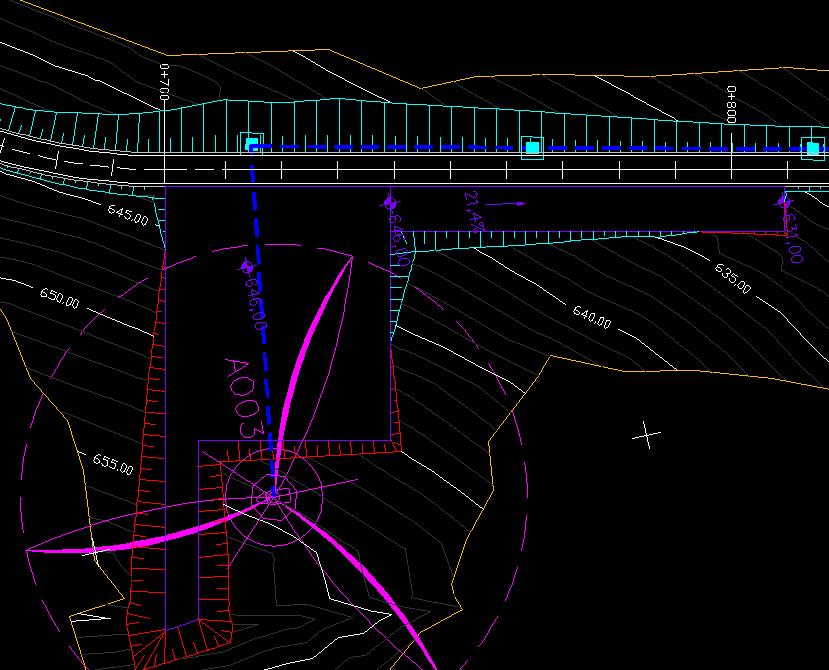 But then, when we check the longitudinal profile, we discover that the road is going down (while obviously the platform stays at the same level, 646 meters). The only way to build something like that is to use a wall to retain the earth inside the crane pad, but this is obviously not the case.
But then, when we check the longitudinal profile, we discover that the road is going down (while obviously the platform stays at the same level, 646 meters). The only way to build something like that is to use a wall to retain the earth inside the crane pad, but this is obviously not the case.
At the end of the platform, the height difference is almost 5 meters:
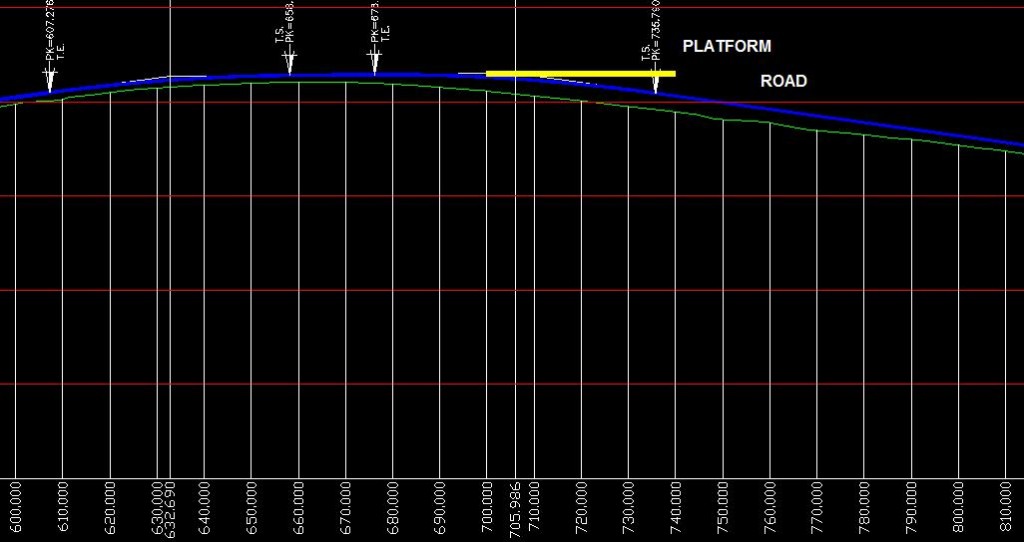 In the longitudinal profile above you can see the platform in yellow and the road in dark blue.
In the longitudinal profile above you can see the platform in yellow and the road in dark blue.
Error #4: insufficient vertical transition curve
Sometimes the Kv parameter for the vertical transition curve, defined as is not adequate.
This happens when it’s lower than 400 – 500: in these cases, the truck can remain “stuck” because it touches below.
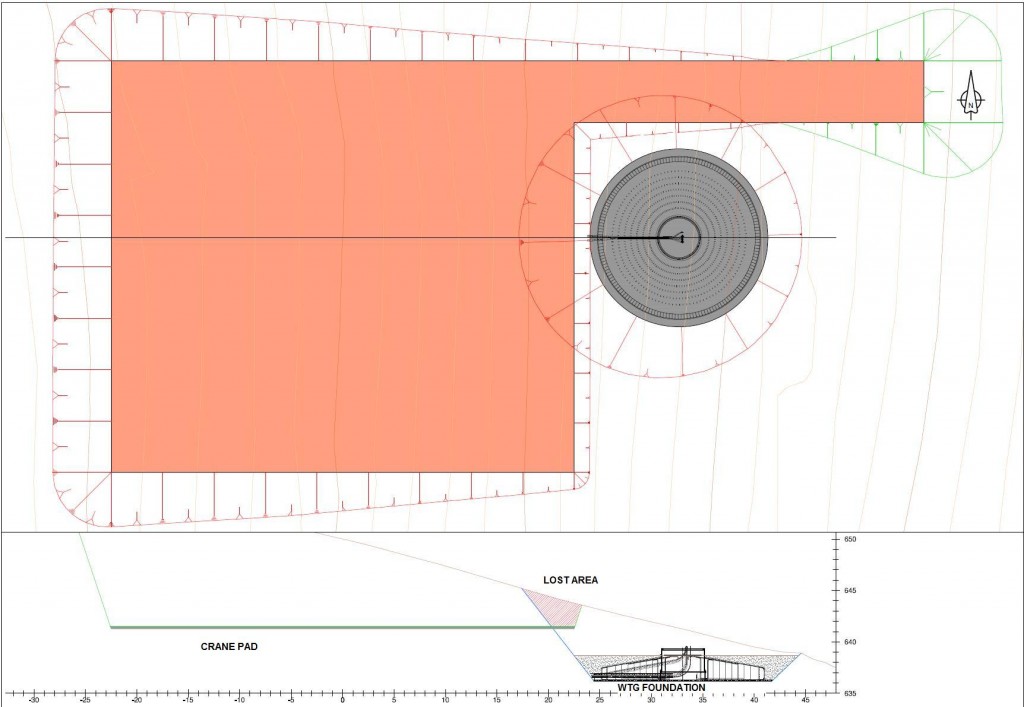
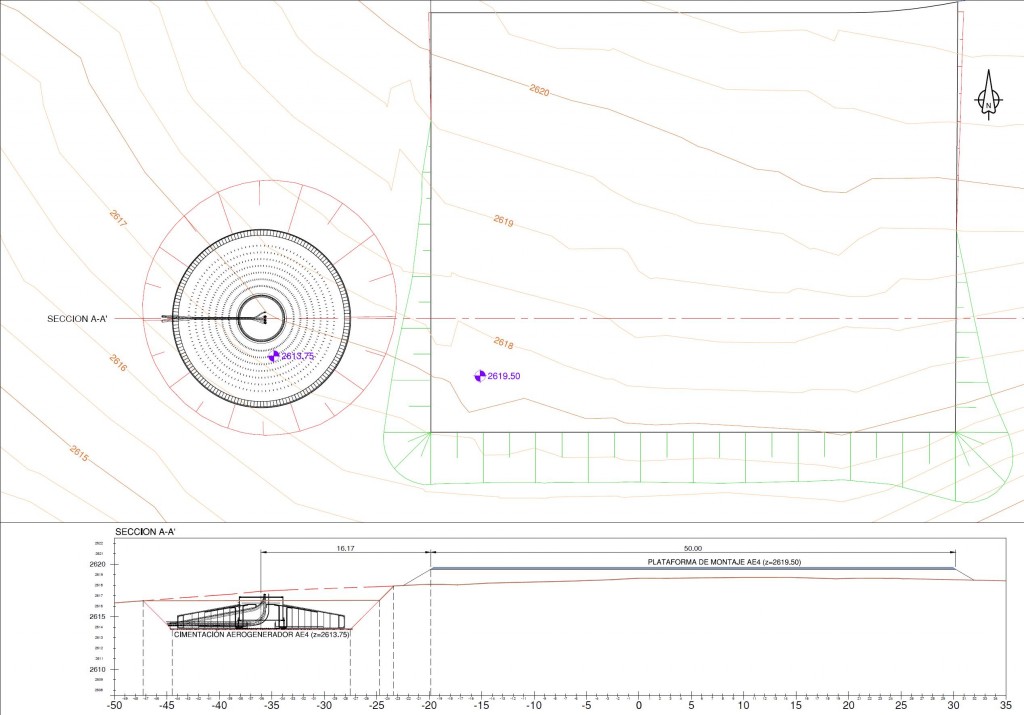
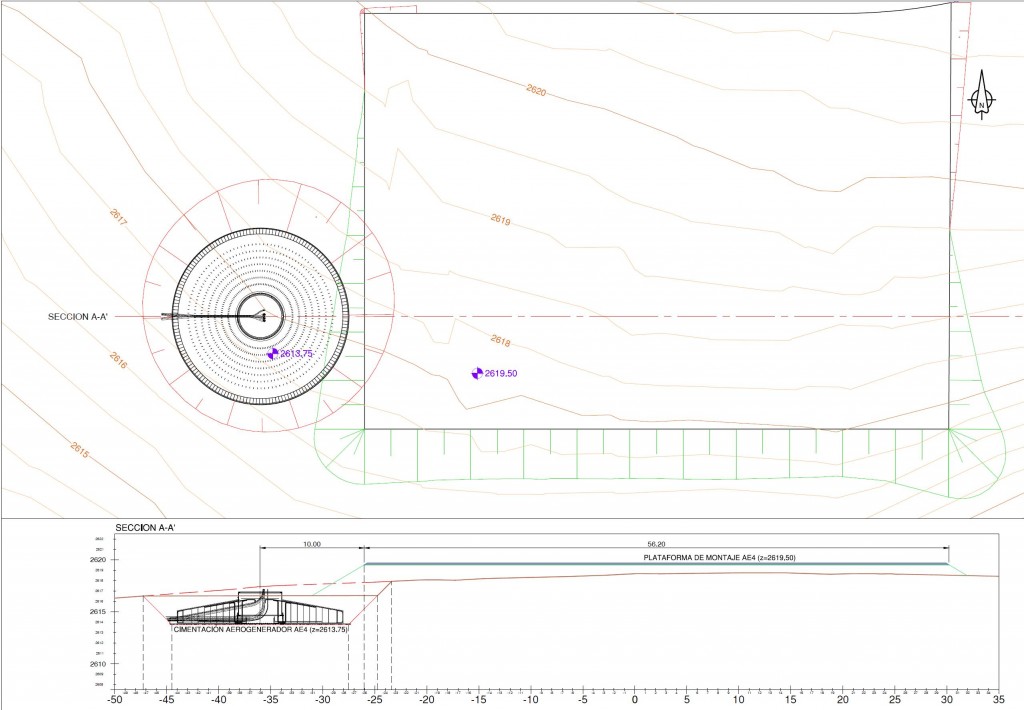
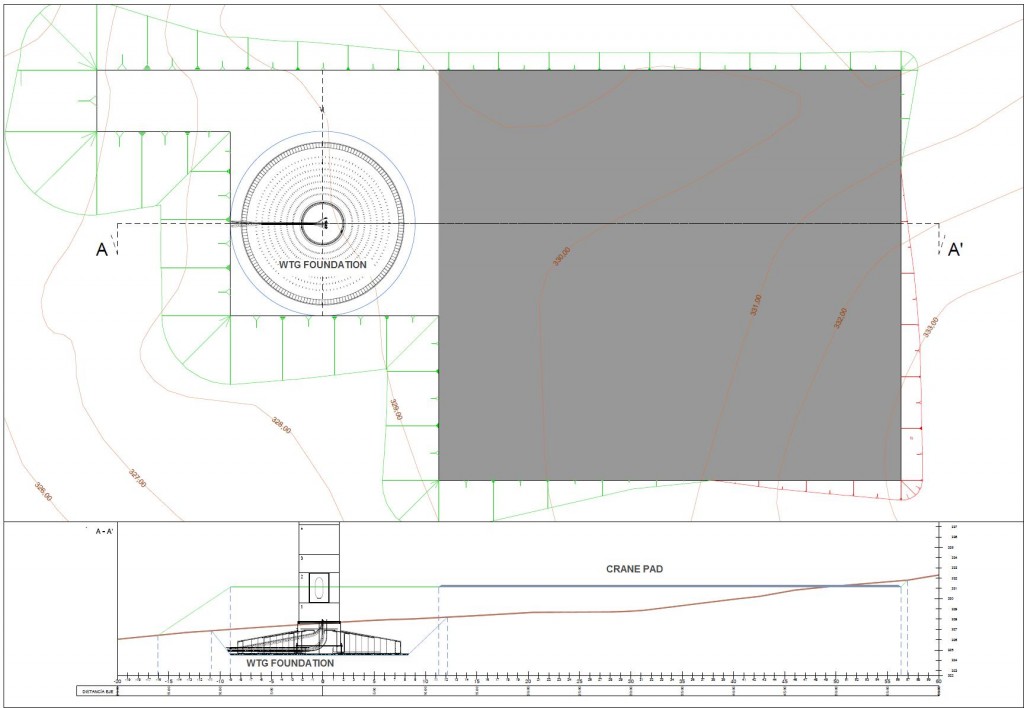

Leave a Reply